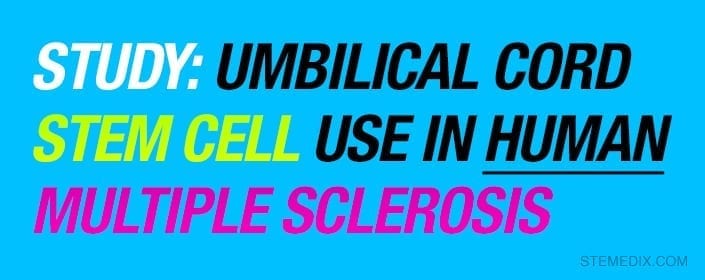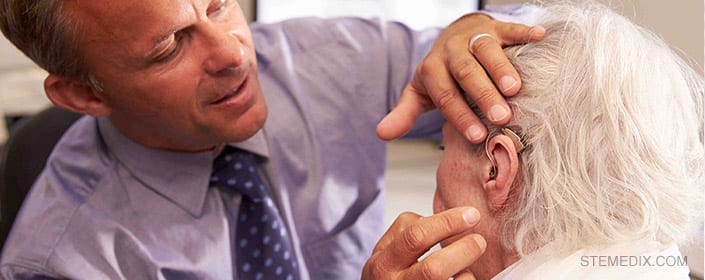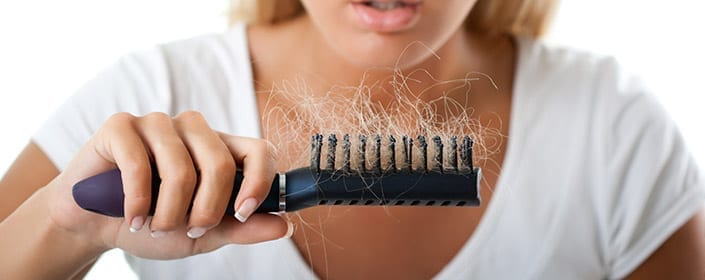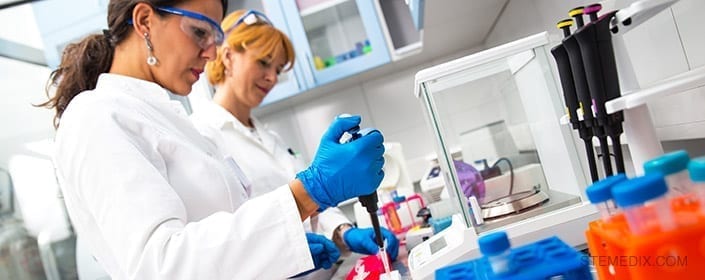
by admin | May 28, 2017 | Studies
Diabetic kidney disease often occurs in those with diabetes mellitus, even when they are undergoing normal diabetes treatment. Given the success that has been seen with a number of stem cell therapies and the lack of highly effective treatment options for diabetic kidney disease, much effort has been focused on determining if and how stem cells could be applied to this disease. In a recent review published in Current Diabetic Reports, researchers reviewed the progress that has occurred thus far in the work toward a potential stem cell therapy for diabetic kidney disease.
Diabetic kidney disease is complex because it involves problems both within the kidney, as well as more systemic issues that arise throughout the body. Because of its complexity, effective treatment is challenging. One way the disease has been treated is by inhibiting a hormone system, called the renin-angiotensin-aldosterone system, which regulates blood pressure in the arteries and the concentration of plasma sodium. When the system is too active, blood pressure increases, so inhibiting the system can help to lower that blood pressure. However, drugs for targeting other features of diabetic kidney disease have not yet proved to be significantly useful.
The type of stem cell that is particularly promising for use in diabetic kidney disease is the mesenchymal stem cell. Mesenchymal stem cells are easy to access and inherently possess some of the characteristics that would prove useful in treating kidney disease, including working to reduce inflammation protect cells. Preclinical studies have shown promising results in using mesenchymal stem cells to slow the progression of diabetic kidney disease. Clinical trials are currently underway to help determine if these cells can indeed help those with diabetic kidney disease and to additionally help to develop specific protocol for applying stem cell treatments in this disease.
Meanwhile, basic science research continues to be undertaken to help elucidate the mechanisms by which stem cells may impart benefits on those with diabetic kidney disease. Understanding the mechanism of action could help inform the development of specific therapies and efficiently end routes of investigation that are unlikely to be fruitful.
Studies have shown that stem cells can be useful for treating kidney disease. Read about it here.
Reference
Griffin, TP et al (2016). The promise of mesenchymal stem cell therapy for diabetic kidney disease. Current Diabetic Reports, 16(5), 42.

by admin | May 5, 2017 | Studies
Patients with multiple sclerosis suffer from an impairment in the function of specific cells of their immune system, known as T regulatory cells. The cause for the disease is not clear, and though treatments do exist, they tend to be expensive and to also carry the risk for toxic effects. To overcome the limitations of current treatment options, researchers have begun to explore the use of stem cells in the development of new treatments.
In a study recently published in the journal Oncotarget, researchers described the preliminary results of a study aimed at identifying the feasibility of using stem cells to improve the functioning of T regulatory cells in those with multiple sclerosis. Umbilical cord-derived mesenchymal stem cells were the chosen cell type for the experiment because this specific type of stem cell has been shown to affect the functioning of immune cells.
The researchers confirmed the idea that T regulatory cells are severely impaired in multiple sclerosis and were able to show that umbilical cord-derived mesenchymal stem cells could recover the functioning of the T regulatory cells of multiple sclerosis patients. Not only were there more living, active T regulatory cells in conditions that included the stem cells versus those without stem cells, but these cells also demonstrated the normal types of activities that T regulatory cells contribute to the immune system.
Previous research has established the potential for targeting T regulatory cells in the treatment of multiple sclerosis, but these studies have been conducted primarily in animal models of the disease. These newer results are the first to demonstrate the impact of umbilical cord-derived mesenchymal stem cells on immune cells of patients with multiple sclerosis.
Read more about how adult stem cell therapy can assist in the reversal of challenging symptoms and damage associated with MS here.
Reference
Yang, H. et al. (2016). Umbilical cord-derived mesenchymal stem cells reversed the suppressive deficiency of T regulatory cells from peripheral blood of patients with multiple sclerosis in co-culture – a preliminary study. Oncotarget, 7: 72537-72545.

by admin | Apr 20, 2017 | Studies
Given the promise they have shown for treating neurodegenerative disease and different types of damage to the brain, it is likely that stem cells have the potential to combat hearing loss. Researchers have recently shown how combining neural stem cells with a specific compound, called morin hydrate, can protect against hearing loss.
Unlike cells of many other organs, hair cells in the inner ear, referred to as cochlear hair cells, are not able self-renew once they are damaged. As a result, damage to these cells of the inner ear increase vulnerability to hearing loss. Replacing these cells with stem cells, has therefore been thought to be a good way to try to reduce this vulnerability.
A major challenge in using stem cells to combat disease or disorders such as hearing loss is finding the best way to transplant the cells so that they survive, differentiate, and function. In this study, published last month in the Journal of Cellular and Molecular Medicine, scientists set out to determine if combining neural stem cells with morin hydrate may make those stem cells more viable and increase their ability to help with hearing loss. Morin hydrate was chosen because it has been associated with a number of beneficial effects, including the suppression of inflammation and cancer activity.
The results of their study showed that morin hydrate was able to improve neural stem cell survival and proliferation and that the compound enabled the types of connections between cells that are necessary for proper neuronal functioning and the protection against hearing loss. In addition to the positive impact of morin hydrate on the stem cells themselves, the compound was also shown to prevent hearing loss that resulted from gentamicin, a specific type of antibiotic.
These initial results demonstrate that the inclusion of morin hydrate in stem cell therapy has promise. Future research will help determine how the combination of morin hydrate and stem cells could be used to address hearing loss and potentially other disorders.
Learn how stem cells can help reduce noise-induced hearing loss here.
Reference
He, Q., Jia, Z., Zhang, Y., & Ren, X. (2017). Morin hydrate promotes inner ear neural stem cell survival and differentiation and protects cochlea against neuronal hearing loss. Journal of Cellular & Molecular Medicine, 21(3), 600-608.

by admin | Apr 14, 2017 | Studies
When cochlear cells within the ear are damaged from exposure to high levels of noise, long-term, permanent hearing loss can occur. Because this hearing loss is associated with damaged cells, researchers have reasoned that replacing those cells with stem cells may provide a means for reversing noise-induced hearing loss. A recent study, published in the journal Neurobiological Disorders has shown that the transplant of epithelial stem cells can in fact help with this type of hearing loss.
The stem cells that were used in the study were isolated from the tongue and were shown to have the ability to survive and proliferate outside the body. Once transplanted, they were also shown to survive and to integrate themselves appropriately.
The auditory brainstem response (ABR) threshold test was used before and after transplantation to determine whether the stem cells actually impacted hearing loss level. The ABR test is a neurological test that assesses whether the brainstem responds to auditory clicking sounds. The test was developed in 1971 and is now the most widely used test for evaluating responses to auditory stimuli. The test reveals the threshold at which noise can produce a response, with lower thresholds indicating better auditory functioning.
Compared to before the transplantation, tests performed 4 weeks after transplantation showed that the stem cell transplants were associated with lower ABR thresholds. Thus, not only did the stem cells survive, proliferate, and integrate normally within the ear, but they were also associated with improved auditory abilities.
These results indicate that stem cells are a promising candidate for reversing long-term hearing loss that is caused by noise-induced damage to cells of the inner ear. Further research will help to clarify the best ways these cells may be used to reverse hearing loss and to what extent their application can benefit those who have suffered noise-induced hearing loss. It is also possible that the relevant research will help reveal ways that stem cells can be used to help those who suffer from other types of hearing loss as well.
Read more about how stem cells treated with morin hydrate can protect against hearing loss here.
Reference
Sullivan, J.M., Cohen, M.A., Pandit, S.R., Sahota, R.S., Borecki, A.A., & Oleskevich, S. (2011). Effect of epithelial stem cell transplantation on noise-induced hearing loss in adult mice. Neurobiological Disorders. 41(2), 552-559.

by admin | Apr 7, 2017 | Studies
Female pattern hair loss is not well understood, but a new study has helped shed light on how stem cells may be able to help treat the disorder. While both aging and family history of male or female pattern baldness can increase the likelihood of experiencing female pattern hair loss, there also appear to be hormonal contributors. Specifically, levels of male hormones, known as androgens, may change during the course of female pattern baldness. These hormonal changes could help explain why women who have undergone menopause are more likely to experience thinning of the hair.
There is currently only one drug that is approved by the United States Food and Drug Administration to treat female pattern baldness. The drug, minoxidil, is a topical treatment applied to the scalp. Unfortunately, the drug does not always help with the symptoms of female pattern hair loss. Other treatment options involve replacing the hair through hair transplants, hair weaving, and hairpieces. Transplants can leave scarring and also have a risk of infection, as they require that tiny plugs of hair are removed where the hair is thicker and transplanting into the balding portions of the scalp. Transplants are also quite expensive.
Because of the limitations of the current options for those with female pattern hair loss, combined with the psychosocial impact of the disorder, researchers have focused attention on the potential promise of stem cells to help generate new hair as a potential therapy. In the current study, researchers focused on adipose tissue-derived stem cells in patients because these cells have been shown to lead to hair growth in conditions outside the body.
The researchers observed 27 patients with female pattern hair loss who were treated with adipose tissue-derived stem cells and saw that 12 weeks of therapy was sufficient to enhance hair growth in these patients. The stem cell therapy led to both thicker and denser hair. In other words, by using stem cell therapy, patients grew hairs that were themselves thicker and also grew more hairs overall.
In addition to the positive effects of stem cell therapy in improving the female pattern hair loss, no adverse side effects were observed. It is therefore likely that stem cells could be used more broadly to help patients with female pattern hair loss grow hair that is less conducive to the appearance of baldness. Future research will help to clarify how and to what extent stem cells can help with this particular type of baldness, as well as other balding disorders.
Learn more about five main benefits of stem cell therapy here.
Reference
Shin, H et al. (2015). Clinical use of conditioned media of adipose tissue-derived stem cells in female pattern hair loss: A retrospective case series study. International Journal of Dermatology, 54(6), 730-735.

by admin | Mar 31, 2017 | Studies
A group of researchers in China who have recently observed positive effects of stem cells on patients with rheumatoid arthritis have now conducted an experiment that helps clarify exactly how these stem cells may contribute to improved symptoms in this particular patient population. The group uses umbilical cord stem cells, which are stem cells that have demonstrated immune regulatory functions because the immune system is implicated in rheumatoid arthritis.
Rheumatoid arthritis is characterized by inflammation and subsequent damage to the joints. The synovium is a type of connective tissue located in synovial joints like knees and elbows and is where the majority of the inflammation occurs. A specific protein, called cadherin-11 that is present in some of the cells in the lining of the synovium has been hypothesized to be an important culprit in rheumatoid arthritis because the protein can lead to inflammation and thus destruction of bones and cartilage.
The researchers decided to test whether umbilical cord stem cells may have an impact on cadherin-11, as such an impact could help explain how these cells help patients with rheumatoid arthritis. They therefore looked at fibrolast-like synoviocytes, the cells that express cadherin-11 in the lining of the synovium, in both patients with rheumatoid arthritis and patients with osteopathic arthritis. Because osteopathic arthritis does not involve the same kind of destruction to the synovium that rheumatoid arthritis does, the researchers expected to find less cadherin-11 in the fibroblast-like synoviocytes of the patients with osteopathic arthritis.
Not only did the researchers find, as suspected, that cadherin-11 levels were higher in the fibroblast-like synoviocytes of patients with rheumatoid arthritis, compared to those with osteopathic arthritis, but they also found that umbilical cord stem cells suppressed the cadherin-11 levels in the fibroblast-like synoviocytes from rheumatoid arthritis patients.
These results point to a potential mechanism by which umbilical cord stem cells reduce inflammation and improve symptoms in patients with rheumatoid arthritis. Additionally, they provide important information on how to develop treatments that will specifically target the cause of rheumatoid arthritis.
Stem cells are showing promising results for treating Rheumatoid Arthritis. Learn about it here.
Reference
Zhao et al. (2015). Umbilical cord-derived mesenchymal stem cells inhibit cadherin-11 expression by fibroblast-like synoviocytes in rheumatoid arthritis. Journal of Immunology Research, 2015, 1-10.







 St. Petersburg, Florida
St. Petersburg, Florida
